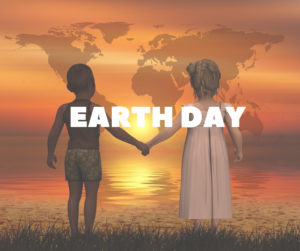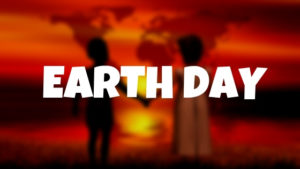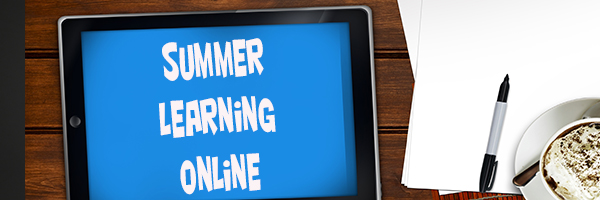Every year, the world celebrates Earth Day on April 22nd, a day the United Nations recognizes as International Mother Earth Day. It is a day to remind ourselves of the importance of clean air, fresh water, and unlittered land. It’s when we can all participate in making that happen rather than accepting the trash-filled oceans, the smoggy skies, and the debris-laden land that is becoming the norm in our lives.
Despite the questionable health of our world, we have made progress. Back in 1970, when Earth Day was first celebrated, trucks spewed black smoke as they drove down the highways, toxic waste was dumped into oceans with no repercussions, and the general opinion was that the Earth took care of itself. That changed when U.S. Senator Gaylord Nelson, Earth Day’s founder, witnessed the ravages of the 1969 massive oil spill in Santa Barbara California and decided it was time for someone to do something. When he looked around for that “someone”, it turned out to be himself. He started with a “national teach-in on the environment” with a simple goal: Encourage people to recognize the importance of protecting the Earth:
“It was on that day [Earth Day] that Americans made it clear they understood and were deeply concerned over the deterioration of our environment and the mindless dissipation of our resources.”
Here are online resources (click for updates) to help you share the importance of Earth Day with your students:
- Books for Earth Day
- Breathing earth– the environment
- Breathing Earth YouTube Video–of CO2 use, population changes, and more
- Conservation Game
- Earth Day Reading List
- Eco-friendly house
- Ecology Games from KoiKiwi
- Ecotourism Simulation–for grades 4 and above
- National Geographic Carbon Footprint Calculator
Here are some grade-specific resources:
Here are a few lesson plans from last year that still work well. Enjoy!
How effective is Earth Day
In the 49 years since the inception of Earth Day, there have been more than 48 major environmental “wins”. Here are some of those:
- The U.S. Clean Air Act was passed, a comprehensive federal law that regulates air emissions.
- The U.S. Clean Water Act was passed to regulate the discharge of pollutants into U.S. waters.
- The U.S. Environmental Protection Agency (EPA) was passed.
- The U.S. Endangered Species Act was passed to protect animal species that are disappearing.
- The Acid Rain (what happens when normal rain becomes loaded with offensive chemicals and scalds the skin) Program obtained emission reductions of sulfur dioxide and nitrogen oxides.
- The importance of the ozone layer to the health of the Earth is better understood.
- The consequences of too much plastic in the Earth’s oceans is coming home to roost.
5 lesson plans for Earth Day

Too often, Earth Day events focus on massive worldwide apocalypses that students can have little impact on, events like the death of rainforests and the melting of glaciers. These break our hearts but for lots of reasons, for students, this often becomes making posters, collecting recyclables, or watching movies. If you’d like to ratchet it up this year, here are five activities that will change the world, incrementally but indubitably. One student at a time, the world can become a healthier, more sustainable place for families and the generations that follow.
Each project is designed to last a month (or longer but no shorter). By the end of that timeframe, students have begun creating the habit of living a sustainable low-impact life. They will be past the point of suffering an annoying change in their lives and into the pride of achieving the goal.
Read Silent Spring
Published in 1962, Rachel Carson’s Silent Spring started many thinking about Earth’s health. It brought to light the dangerous use of a pesticide called DDT that was polluting rivers and destroying the eggs of birds of prey like bald eagles. Have students read the book, meet in study groups to discuss it, and then devise their own projects to address the concerns. By the end of a month, the ideas contained in the book will color how they look at the world. When they leave school to work in an office that offers styrofoam cups, they’ll bring their own mug. When they go to a restaurant and order takeout, they’ll provide their own reusable containers to fill.
By the way, it doesn’t have to be Silent Spring. It can be any ecology-sensitive book that will inform students on this subject.
Go plastics free
Plastic takes millions of years to decompose. It can be found swirling in the ocean where it badly affects marine life. Every year, mammals, seals, and sea birds are killed after ingesting plastic or getting tangled in it. For one month, students work to reduce their use of plastic. This is more than straws. It includes plastic water bottles, throw-away plates and utensils, and plastic bags. Students start by calculating their plastic consumption with this Plastics Calculator from National Geographic. It focuses on their use of the most common plastics such as bottles, cups, straws, bags, stirrers, silverware, and food containers. Students will itemize their usage at the start of the month, meet in small groups (or as a class) to discuss ways to reduce this, and then weekly rerun the calculator to see if they’re improving.
One easy suggestion for reducing plastic use is to reuse plastic containers, bottles, cups, and bags. Instead of considering them throw-aways, wash them and reuse just like people did before plastic took over. Two more easy, low-budget ways to reduce plastic: When ordering takeout drinks (like soda), refuse the beverage top (how often do you spill?). When eating out, bring your own plastic container for the doggy bag.
Go paper free
Yearly, the world produces more than 300 million tons of paper. Students will not be able to impact the largest users — schools and businesses — but they can affect how much paper is used in their homes. For one month, do everything possible to avoid paper:
- Rather than print a document or project, share it or email it.
- Rather than share a paper with others, figure out how to display it on a digital device and share it that way.
- Instead of wiping spills with paper towels, use cloth towels.
- If you must print, print only what you need rather than printing the entire document.
Live a sustainable life
Wikipedia defines Sustainable Living as:
“a lifestyle that attempts to reduce an individual’s or society’s use of the Earth’s natural resources and personal resources.
This means living life in a way that doesn’t use resources necessary for others or future generations. The problem is, few think like this. It’s become a throw-away society with little regard for where that must end.
Have students write down all the changes they made in a month that promoted sustainability. Here are ideas to get started:
- Use cloth towels instead of paper.
- Wear clothing until it’s worn out. For this project, don’t toss any clothing because it’s out of fashion or a little worn during this month.
- Avoid anything that’s considered a throwaway. That includes plastic straws, containers, cups, and carriers.
- Bring your lunch in a reusable paper sack. Wrap sandwiches in reusable wax paper. Give yourself bonus points if you use the wax paper or plastic liners from store-bought items to wrap your lunch items.
- Shorten your shower by five minutes. That’s all, just enough that over the course of a month (or a year), it’ll make a difference.
- Turn off lights in rooms you aren’t in.
- Take the stairs instead of an elevator when possible. For shorter distances, walk rather than ask for a ride.
- Group errands that require driving to complete those close together before going on to another location.
***
Each of these activities is rooted in the concept of personal responsibility. Students complete them individually, without assistance. By the end of a month, students will feel good that they took responsibility for saving the world.
More on Ecology
- It’s Time to Make Your Classroom Paper-free
- The Case for PDFs in Class
- World Environment Day: Living Responsibly with Nature

Jacqui Murray has been teaching K-18 technology for 30 years. She is the editor/author of over a hundred tech ed resources including a K-12 technology curriculum, K-8 keyboard curriculum, K-8 Digital Citizenship curriculum. She is an adjunct professor in tech ed, Master Teacher, webmaster for four blogs, an Amazon Vine Voice, CSTA presentation reviewer, freelance journalist on tech ed topics, contributor to NEA Today, and author of the tech thrillers, To Hunt a Sub and Twenty-four Days. You can find her resources at Structured Learning.





































